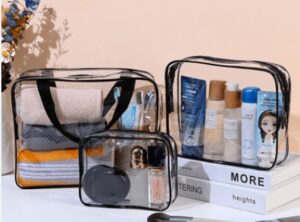Creating a functional and durable laundry bag can be surprisingly simple—and scalable. Whether you need one sample or bulk production, a well-stitched bag can be both a useful storage solution and a practical item for daily use. Here’s how to design and sew a laundry bag that meets real-world storage needs, especially in spaces like hotels, dorms, gyms, or retail.
Step 1: Choose the Right Fabric
The first step in sewing a laundry bag is selecting a sturdy material. Cotton, polyester, or mesh fabrics are popular choices. Look for materials that are:
– Breathable to prevent odor buildup
– Easy to wash and dry
– Strong enough to carry heavy laundry loads
Step 2: Decide the Size and Shape
Laundry bags come in various dimensions. Before cutting your fabric, decide on a size that suits your target usage scenario. For example:
– Tall bags with drawstrings work well in shared living or hospitality spaces
– Flat, zippered styles are ideal for under-bed or suitcase storage
Step 3: Cut the Fabric
Once you finalize the measurements, cut two identical rectangles for the front and back panels. For a standard bag:
– Cut two pieces approximately 24 x 36 inches
– Add an extra inch on all sides for seam allowance
Step 4: Sew the Panels Together
Place the fabric pieces together, with the inside (wrong sides) facing out. Sew along the two longer sides and one short side. Use reinforced stitching for extra strength. If needed, insert a gusset at the base for more volume and durability.
Step 5: Add the Closure
Most laundry bags include a drawstring, zipper, or Velcro closure:
– Drawstring: Fold over the top edge of the bag, sew a hem, and insert a cord or string
– Zipper: Install a zipper across the top using a zipper foot on your sewing machine
– Velcro: Stitch Velcro tape along the opening for a quick close-and-open feature
Step 6: Reinforce and Finish
Finish the seams with a zigzag stitch or a serger to prevent fraying. Turn the bag right-side out and double-check the edges and stitching for any weak points. If branding or custom labels are required, now’s the time to add them using embroidery or patches.
Step 7: Consider Custom or Bulk Options
For scaled production, create a cutting template and offer variations in:
– Color
– Size
– Closure type
– Material composition
This simple sewing process produces a reliable, reusable laundry solution. With small modifications, it can meet various storage needs while allowing for bulk manufacturing and custom requests.






